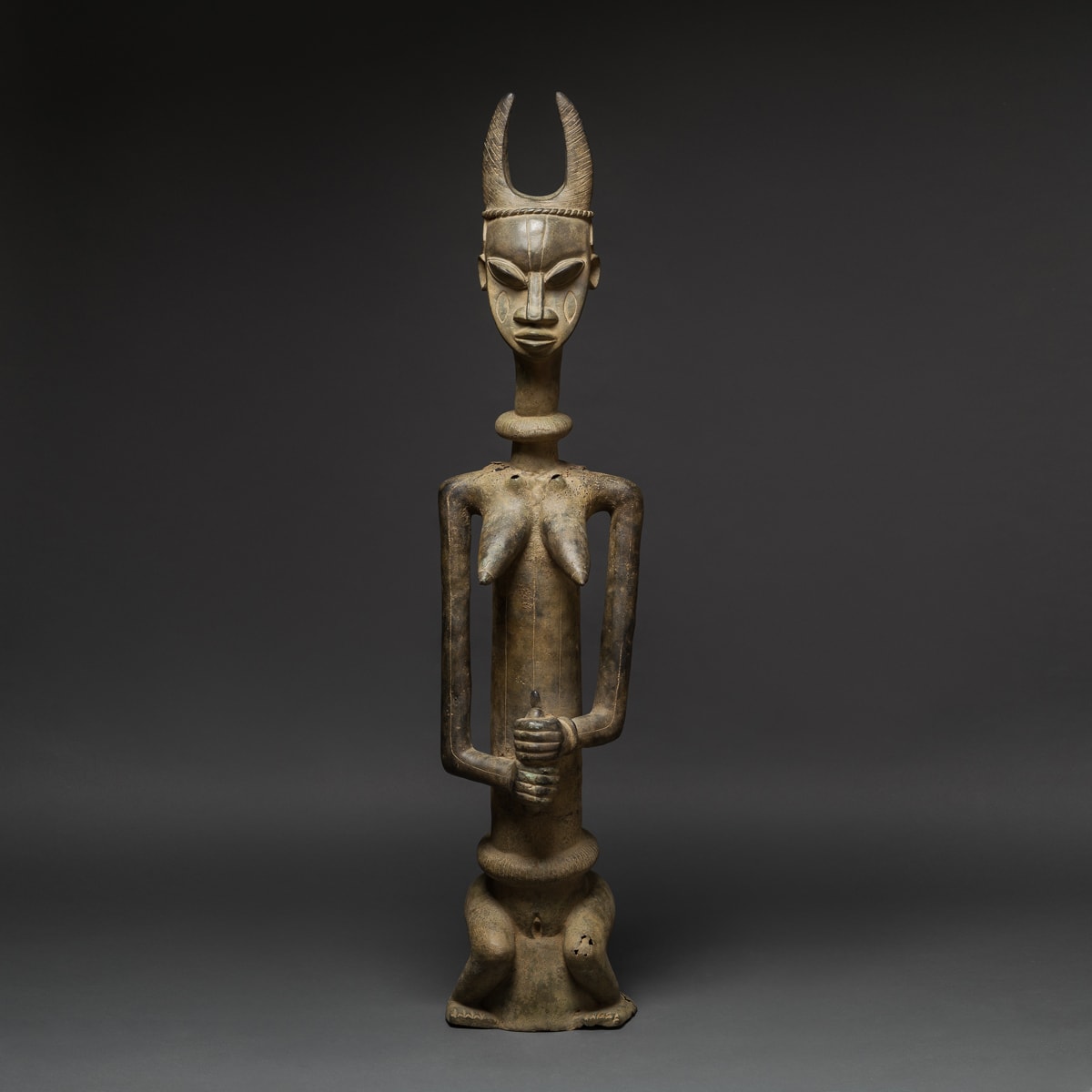Yoruban female bronze statue, 1800 CE - 1920 CE
Bronze
120 x 27.9 cm
47 1/4 x 11 in
47 1/4 x 11 in
AM.0429
Further images
The Yoruba of West Africa (Benin, Nigeria and Togo, with migrant communities in parts of Ghana, and Sierra Leone) are responsible for one of the finest artistic traditions in Africa,...
The Yoruba of West Africa (Benin, Nigeria and Togo, with migrant communities in parts of Ghana, and Sierra Leone) are responsible for one of the finest artistic traditions in Africa, which remains vital and influential still today.
Much of the art of the Yoruba, including staffs, court dress, and beadwork for crowns, is associated with the royal courts. The courts also commissioned numerous architectural objects such as veranda posts, gates, and doors that are embellished with carvings.. The Yoruba worship a large pantheon of deities, and shrines dedicated to these gods are adorned with such carvings and array of altar figures and other ritual paraphernalia. Masking traditions vary regionally, and a wide range of mask types are employed in various festivals and celebrations. The Yoruba people regard the human head (ori) as the most important part of a person. Likewise, the head is the most prominent part of every Yoruba sculpture., as the head constitutes a person's life-source and controlling personality and destiny.
In the absence of any written early history, the beginnings of Benin art are obscure. European documentation confirms that ivory carving and metalwork flourished from the 15th to the late 19th century, the period during which Benin dominated the pepper trade and was a formidable military power. Benin plaques and figures were unknown in Europe and America until 1897, when British troops on a punitive expedition destroyed the capital city of Benin; the thousands of artworks confiscated were taken to London and sold. It was then that the British Museum and the Museum of Ethnology in Berlin acquired the core of their great Benin collections.
Much of the art of the Yoruba, including staffs, court dress, and beadwork for crowns, is associated with the royal courts. The courts also commissioned numerous architectural objects such as veranda posts, gates, and doors that are embellished with carvings.. The Yoruba worship a large pantheon of deities, and shrines dedicated to these gods are adorned with such carvings and array of altar figures and other ritual paraphernalia. Masking traditions vary regionally, and a wide range of mask types are employed in various festivals and celebrations. The Yoruba people regard the human head (ori) as the most important part of a person. Likewise, the head is the most prominent part of every Yoruba sculpture., as the head constitutes a person's life-source and controlling personality and destiny.
In the absence of any written early history, the beginnings of Benin art are obscure. European documentation confirms that ivory carving and metalwork flourished from the 15th to the late 19th century, the period during which Benin dominated the pepper trade and was a formidable military power. Benin plaques and figures were unknown in Europe and America until 1897, when British troops on a punitive expedition destroyed the capital city of Benin; the thousands of artworks confiscated were taken to London and sold. It was then that the British Museum and the Museum of Ethnology in Berlin acquired the core of their great Benin collections.





